Deciphering Deities - Will the Real Quan Yin Please Stand Up!
PRIMITIVE - Friday, July 21, 2017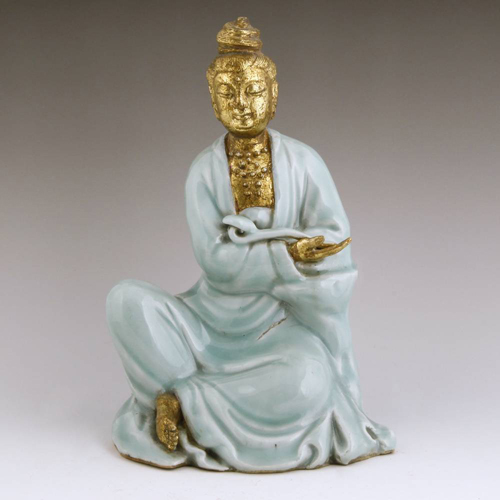 |
|
By Glen Joffe
It’s impossible to deal in world art on any scale and not have frequent encounters with world religion. There are simply too many intersections; perhaps because there aren’t five religions in the world, but at last count somewhere around forty-two hundred. Each of them has their own customs, rituals, history, practitioners, and of course, deities, whether they be one or many. The pursuit of spiritual beliefs appears to be a common denominator among humankind. These beliefs bind us together across geography and time, and they are frequently expressed through the creation of artwork. In turn, perhaps the most common subject one encounters in religious art is the depiction of deities - saints, gods, bodhisattvas, demons and demi-gods. They populate – even dominate - religious art, appearing in just about every medium imaginable. All this art begs the question: what do these deities really represent?
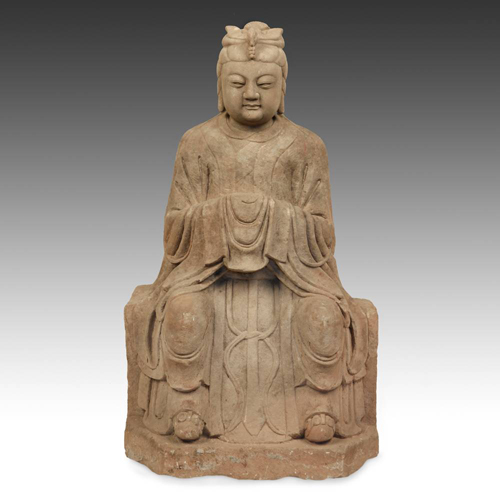 |
|
One of the most frequently depicted deities found anywhere in the world is Quan Yin. To fully understand Quan Yin, it is necessary to begin with a discussion of Avolokitesvara, the Buddhist Bodhisattva (which can be defined as a Buddha-to-be) of infinite compassion and mercy. Beloved throughout all schools of Buddhism, Avolokitesvara personifies perseverance and patience, for this deity is said to have postponed their own Buddhahood so every sentient being on earth could be liberated from suffering. Avolokitesvara is the embodiment of compassion, and by extension, mercy, which flows from compassion. Creation myths abound for Avolokitesvara. In one story, he (remember the “he” part) was born from Buddha’s tears. In another, he was born from a ray of light emanating from the eye of Amitabha, the Buddha of Infinite Light. In either event, there are different creation myths for Avolokitesvara, who is first mentioned in the Buddhist Sutras, specifically the Lotus Sutra. In essence, the Sutras represent the canonical texts of Buddhism, and the Lotus Sutra is said to contain the final teachings of Buddha with instructions for salvation. It is fair to say that Avolokitesvara has been around for almost as long as Buddha himself.
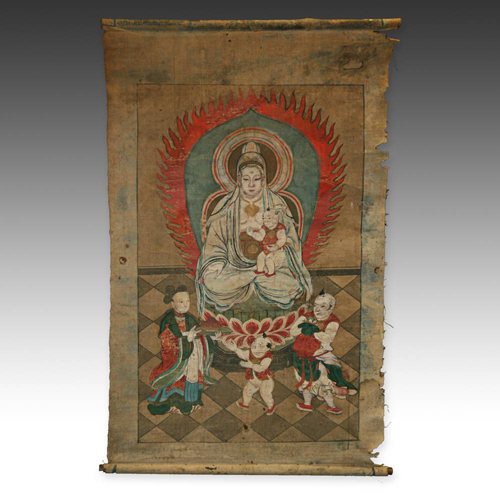 |
|
Thinking historically, it was inevitable that the worship of Avolokitesvara would spread throughout the world in line with the spread of Buddhism itself. In other words, as Buddhism spread so did the worship of Avolokitesvara. Yet, the name of the deity changed in different countries and regions of the world. In Tibet, not quite ground zero for the worship of Avolokitesvara, he is known as Chenrezig. The Dalai Lama is said to be a reincarnation of Avolokitesvara. In Cambodia and Thailand, Avolokitesvara is known as Lokesvara. This may be because in Sanskrit "esvara" means lord and "loka" means world, the full name Avolokitesvara translating as “lord who gazes down at the world.” By the time the worship of Avolokitesvara reached China, the deity became known as Quan Yin or Guanyin. The Chinese name Guanyin is short for Guanshiyin, which translates as “The one who perceives the sounds of the world.” Scholarly thinking suggested Avolokitesvara was incorrectly translated as “He who gazes down upon the sound” as opposed to the world. The Chinese scholar Xuanzang (602-664 A.D.) was a Buddhist monk who translated the name Avolokitesvara as Guanzizai, which provides this translation. Yet, none of this matters. By the time the worship of Avolokitesvara reached China, the literal translation of Avolokitesvara as Guanyin or “sound perceiver who hears the cries of sentient beings” became the accepted name – and Quan Yin an accepted form of Guanyin.
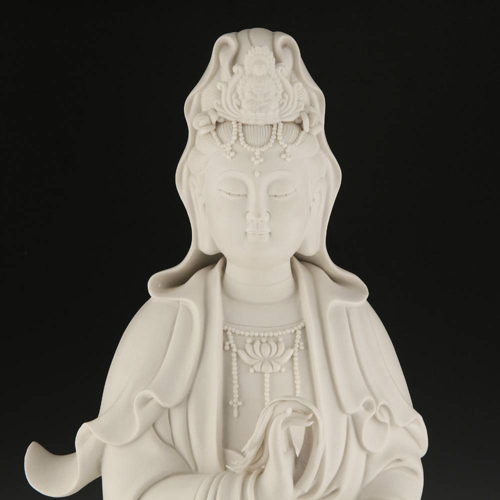 |
|
It takes time for a deity to take root and evolve in the eyes of the living; and an especially long time to capture the popular imagination of people and transcend religion. This is what happened to Quan Yin in China. She evolved from a Buddhist deity to a popular icon capturing the imagination of Buddhists and non-Buddhists alike. There are reports that the worship of Quan Yin as Avolokitesvara was introduced into China as early as the first century AD. By the 7th century, the name changed. All along, the deity was a popular subject for artists. Early illustrations depict Quan Yin as male. Around the 12th century Quan Yin is depicted as female. The Lotus Sutra states Avolokitesvara can take the form of male or female, so it wasn’t a big leap for artists to begin representing Quan Yin as a goddess in beautiful flowing robes, adorned with jewels to signify the majesty of her teachings, and with a serene, compassionate countenance. Those types of depictions stuck, and today Quan Yin is mostly illustrated as female.
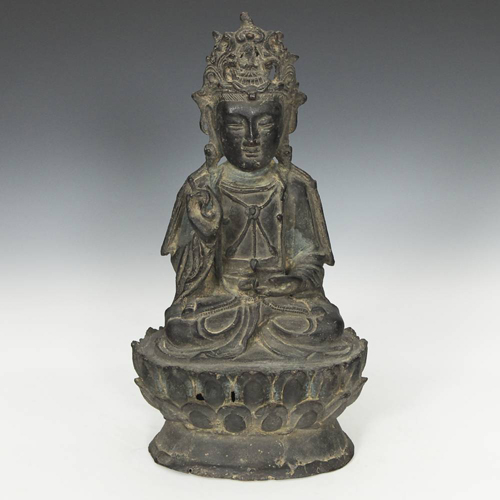 |
|
In turn, as a female she became associated with motherhood, fertility, and the protection of children. If she could protect children then she could also protect anyone at risk; for example, the sick and the handicapped. In one legend, Quan Yin stayed on an island where she meditated and helped stranded fishermen, so she expanded her duties and became the protector of seafarers. Her range as a goddess expanded. No longer a purely Buddhist deity she became worshipped in Chinese folk religions and celebrated as one of the immortals in Taoism. She became a symbol of enlightenment and venerated by merchants because it was believed she could grant good fortune. Who doesn’t want a dose of good fortune? In short, Quan Yin became an all-around deity capable of protecting, saving, healing, and wish-fulfilling, and all the while she remained a central character in art as a means to make people’s beliefs tangible and celebrate the power of those beliefs.
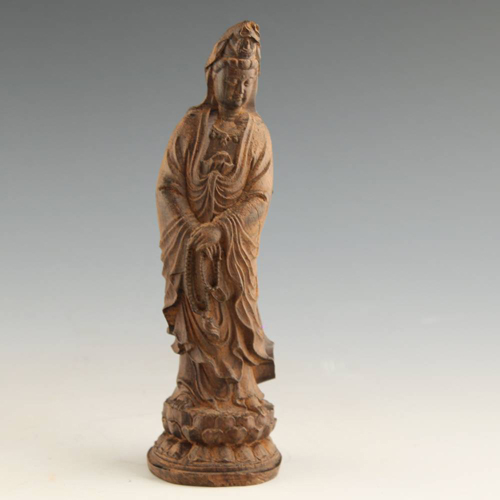 |
|
In the roughly 2,500 years since the birth of Buddhism, Quan Yin has grown beyond her Buddhist roots. Today, she is venerated, worshipped and invoked for many, many reasons. Of course, it is still believed she is the source for infinite compassion and mercy, but she is also the first deity to whom people turn in times of trouble or want and the first to whom they give gratitude for blessings. Artistic depictions of Quan Yin can be like lightning rods where human desire and the power of belief coalesce to produce positive outcomes. All living things have a life cycle. At the same time, beliefs and the meaning of symbols can change. In the case of Quan Yin, new beliefs were added while old beliefs remained relevant; and over time she became a more diversified symbol for a greater audience. In the life cycle of deities, she is alive and well, still serving as a bridge between the real and imagined worlds - the worlds of humankind and divinity.